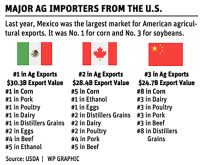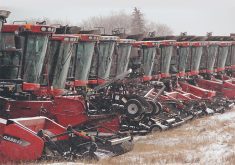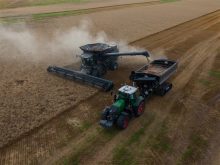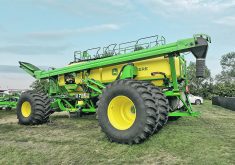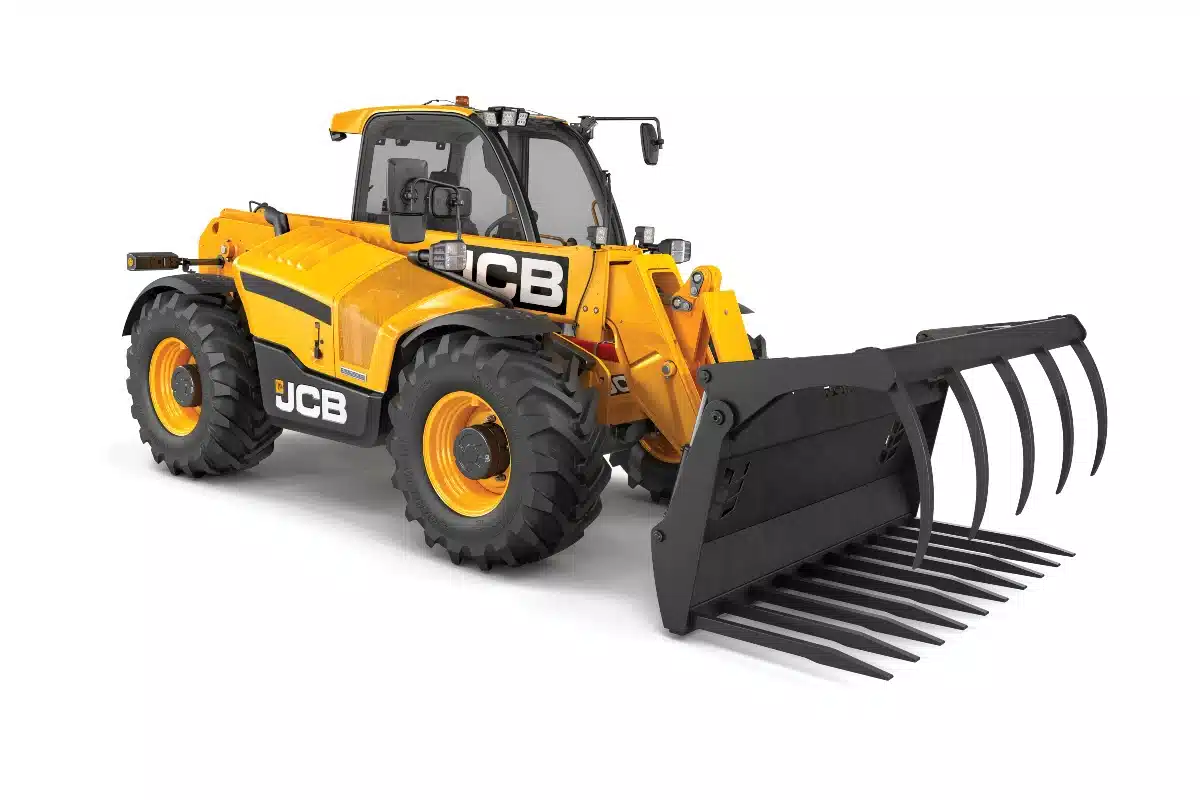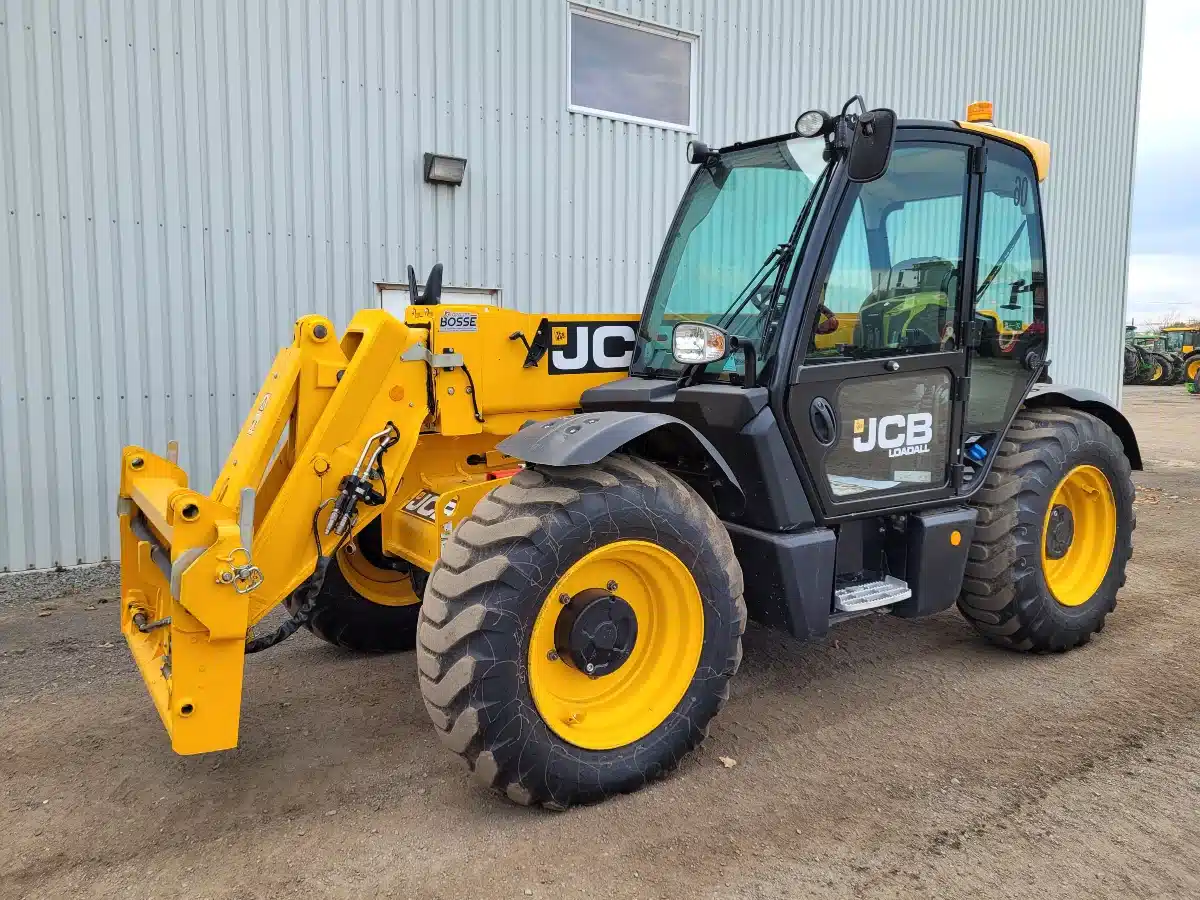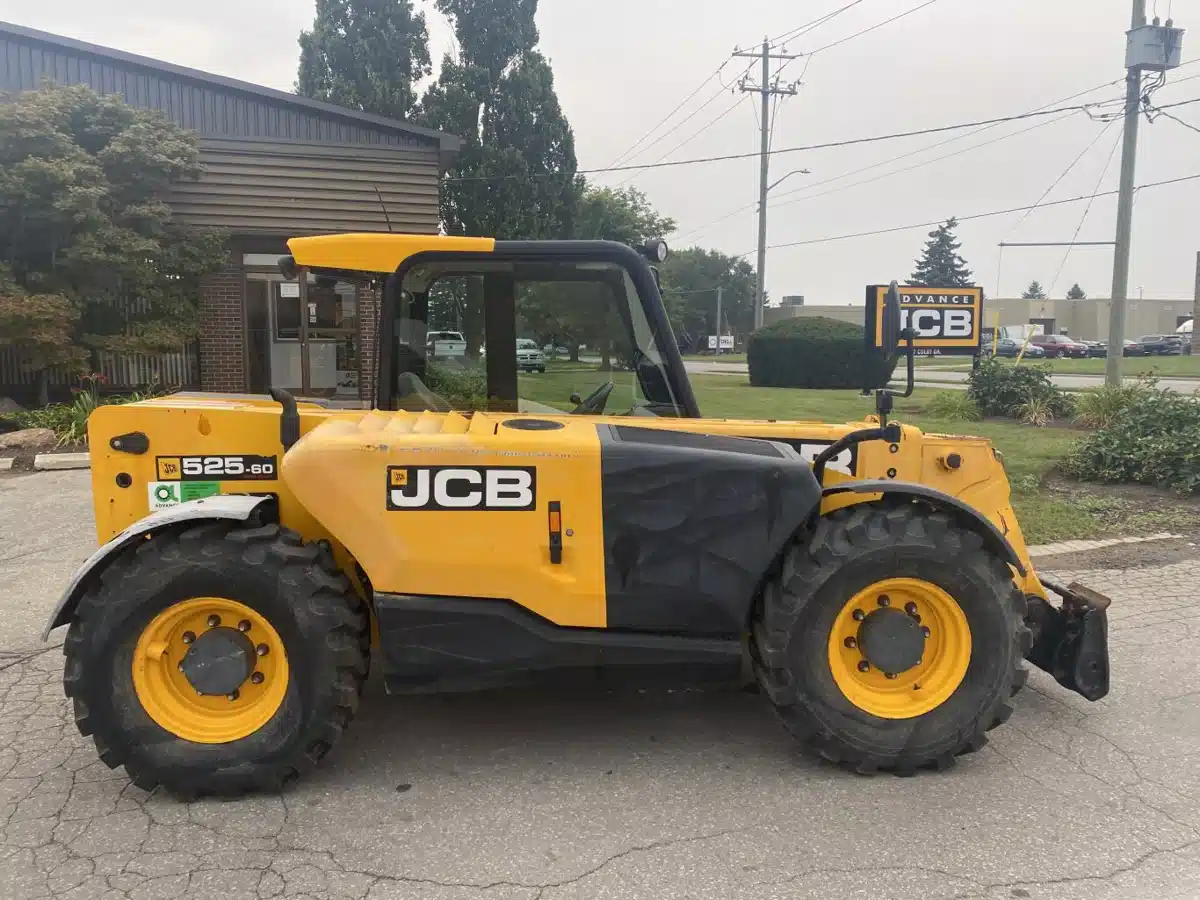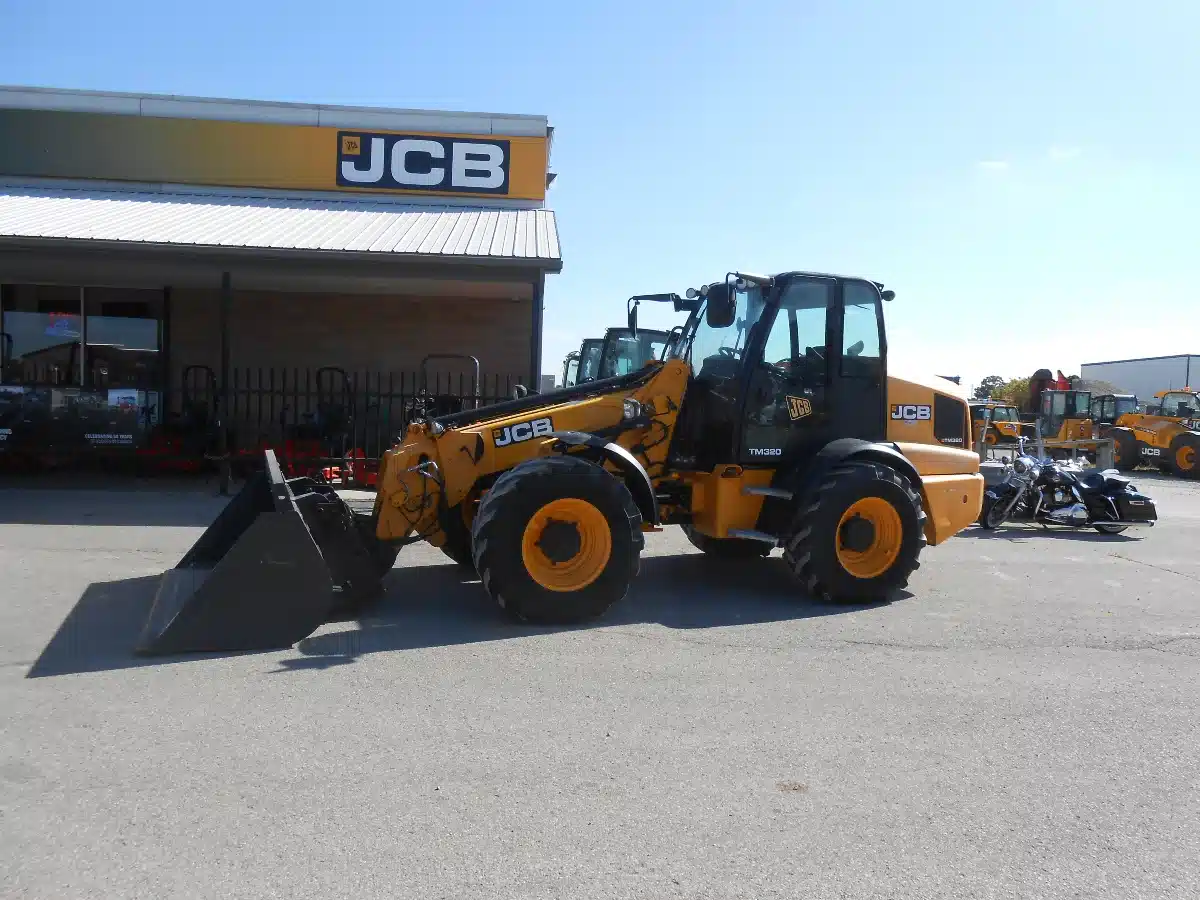A few machines have been introduced in recent years that take jobs away from the typical loader tractor. England-based JCB has some of them.
The brand showed three different machines at the Commodity Classic Farm Show in Texas in February with the latest round of updates.
Most notably for the 2024 model year in the line of telehandlers is the DualTech VT combination hydrostatic-powershift transmission.
“A lot of our competition push a Vario or hydrostatic transmission, which is great for when you’re loading material, but the disadvantage is when you’re on the road, you lose a lot of that power,” says Chris Gately, JCB’s ag product sales manager for North America.
“JCB has always leaned toward a powershift model. So, when you’re going up and down the road or across yards, it has its advantages.”
The DualTech VT functions in hydrostatic mode at speeds up to 12 m.p.h. (19 km/h). At speeds above that up to 25 m.p.h. (40 km/h) it switches to powershift.
“If you’re loading material or inching up into a pallet, you have a lot more control of a hydrostatic machine versus powershift,” says Gately.
“Basically, we’ve retained the two top-end gears from our standard powershift transmission. It’s the only telehandler with that type of gearbox.”
The unit made its North American debut at the U.S. Farm Progress show last summer, although it was available in Europe before that. While telehandlers are far more popular on European farms than those here, Gately says that is slowly changing.
“One thing we’re seeing a big growth in is with our hay guys. They can stack higher and they’re using them a lot in the field. It’s a lot more of an all-round machine.
“Really our market is that tractor loader market. The way we see it, any dairy, feedlot or ranch that might be running a tractor loader, there’s no reason they couldn’t be running a JCB telehandler. But it is very different from what they’re used to, so we have to prove that concept.”
JCB’s Agri line of telehandlers is designed specifically for agricultural use, says Gately.
“It’s built stronger. The hinge pins are lower for that ground engagement. It’s generally a lot stronger, more robust machine for those agricultural applications.”
Telescopic loader
The DualTech Vt transmission does not carry over to the TM Series articulated loaders the brand offers.
“We stick with just a powershift in our telemaster TM,” says Gately. “We’ve made some changes to that transmission. We’ve gone to an eight-speed powershift, which makes the transition between gears a lot more seamless.”
There are three models in the series, the TM 120, 320 and 420, offering 73, 130 and 150 horsepower respectively. They allow for lifting loads from about 15 feet to 17 feet 10 inches (5.4 metres).
“We updated our cab, so we have a more spacious layout, a seat-seat mounted joystick,” says Gately.
“We’ve made some changes to the steering column to allow for easier entry and exit.”
He thinks the articulated TM loaders are a good next step when moving from a tractor to a heavier loader.
“It’s a hybrid wheel loader. It sits right between a payloader and a telehandler. For us, it’s another concept and solution for a farmer. It’s definitely an entry level machine for something like a dairy, where it’s getting to the size they’d like and need a payloader.
“It gives them that step from a tractor before they take that leap to a payloader. And with the extendable boom, it just makes it so much more versatile around the farm.”
Teleskid
JCB’s Teleskid skid steer design uses a single, extendable boom, allowing for a side cab entry rather than requiring an operator to climb in and out over top of the bucket and load.
“The Teleskid has been out since 2017,” says Lee Tice, product manager for skid steers, excavators and telehandlers at JCB.

“We have three models in the large platform. We have a track and wheeled variant, 3,600 pound operating capacity. Then we have a small platform tracked machine with about a 2,100 pound rated operating capacity.”
The Teleskid gets cab improvements for 2024.
A telescopic boom significantly improves lift height, which is limited on most skid steers.
“From a forward reach standpoint, you have about eight feet from the operator. Height is where it really shines,” says Tice.
“On the large platform you get 13.1 feet (3.9 metres) lift height, where your traditional compact track loader lift height is going to be around 10 feet, six inches.
“It really opens doors for what a skid steer can do. It gives it a multipurpose application.”






